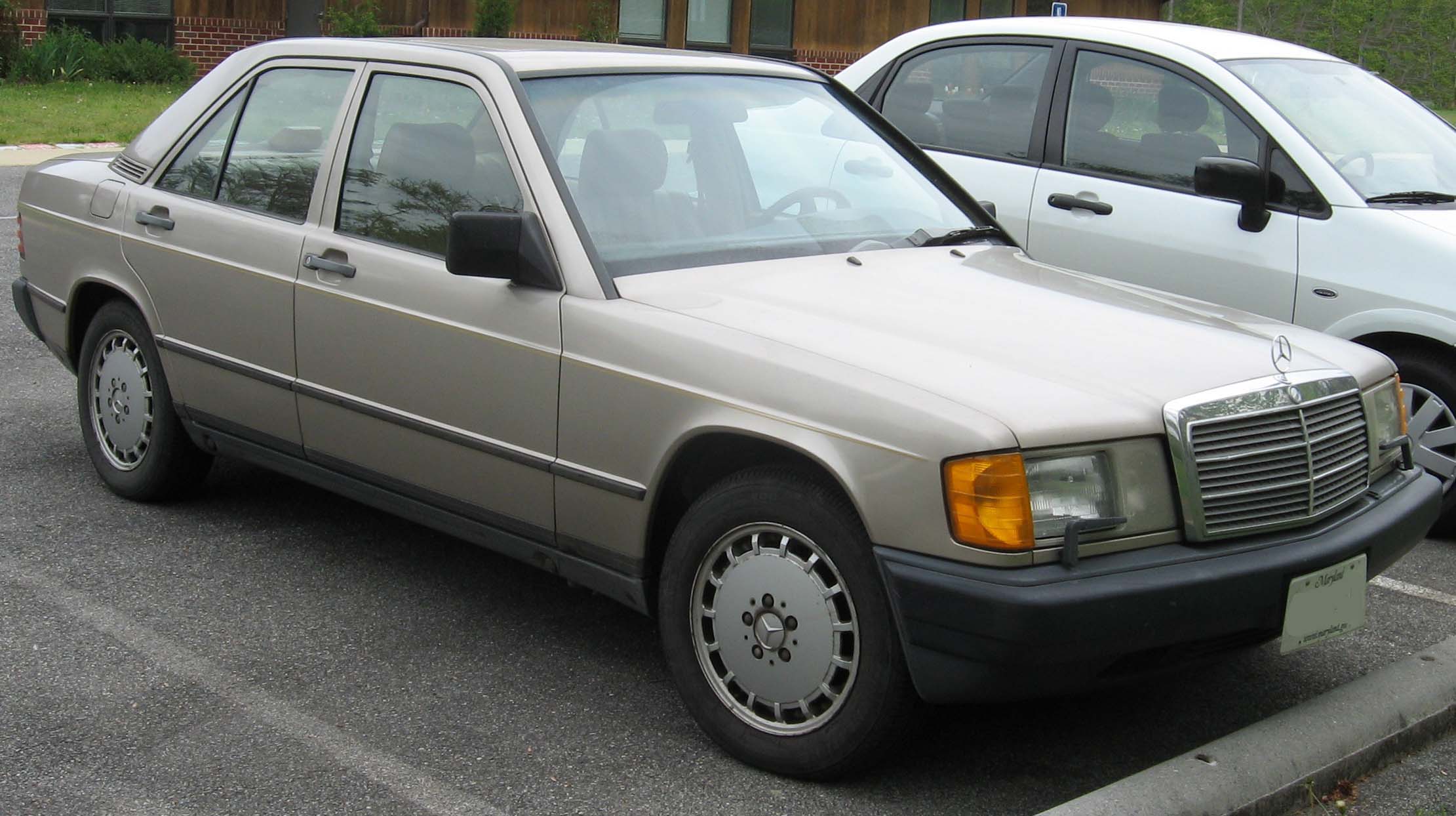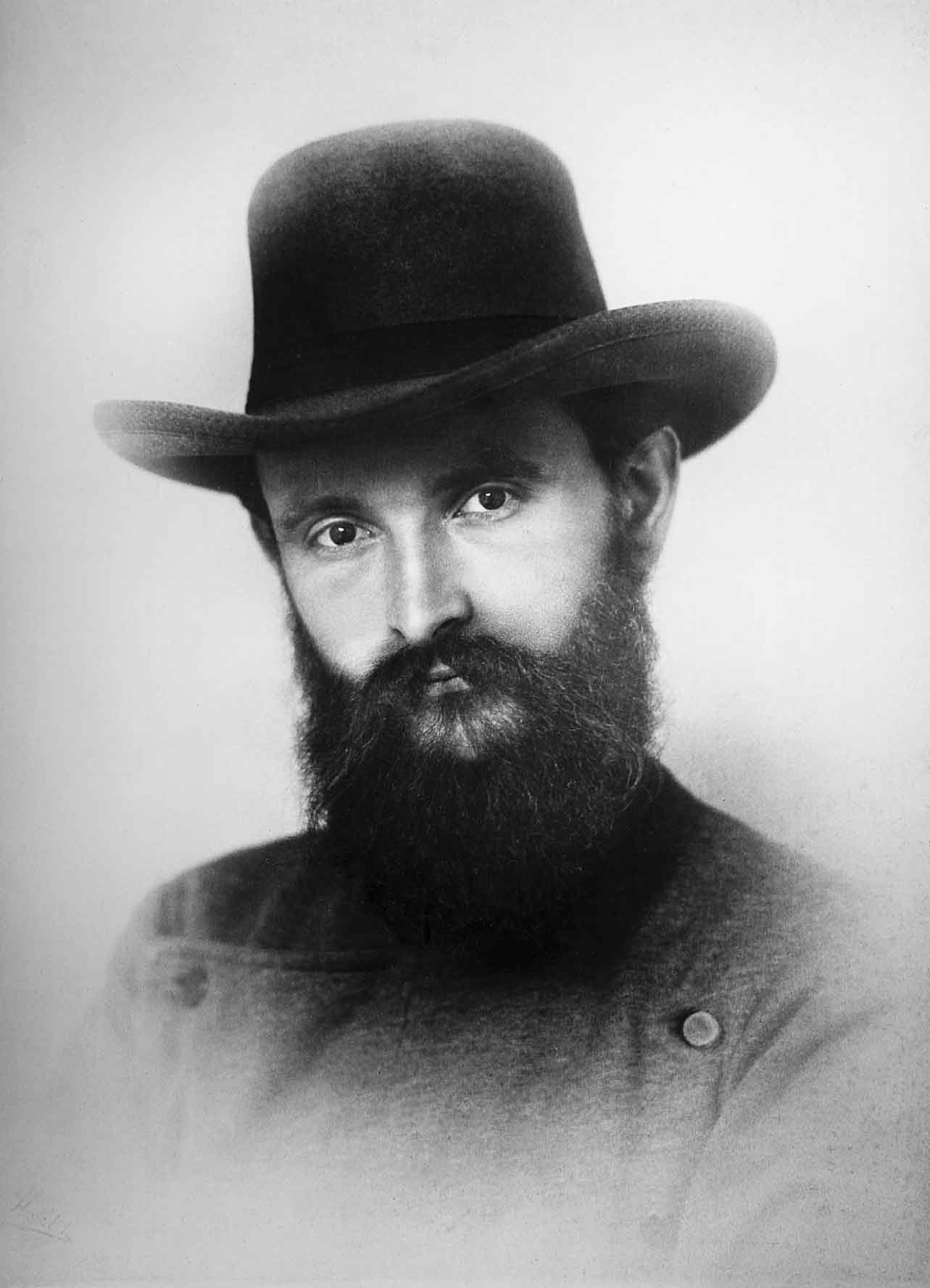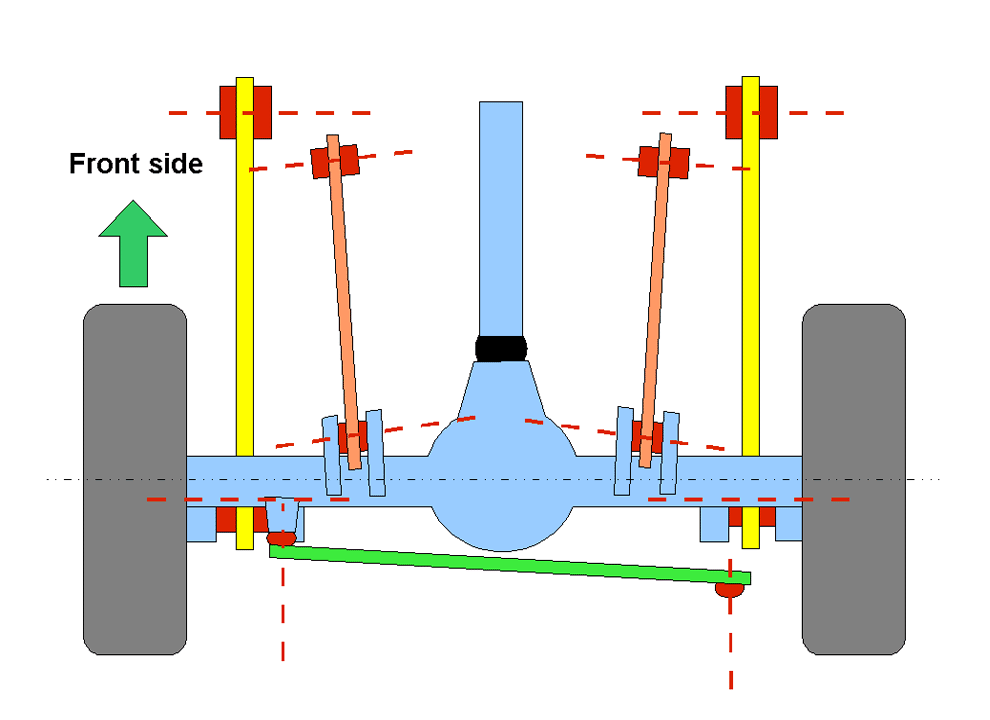|
Mercedes 190
The Mercedes-Benz W201 was the internal designation for the Mercedes 190 series sedans, a range of front-engine, rear drive, five passenger, four-door sedans manufactured over a single generation, from 1982 to 1993 as the company's first compact class automobile. Designed by Bruno Sacco, head of styling at Mercedes-Benz from 1975 to 1999, the W201 debuted at the 1982 Paris Motor show. Manufactured in both Bremen and Sindelfingen, Germany, production reached 1,879,629 over its eleven-year model life. The W201 introduced a 5-link rear suspension subsequently used in E and C class models, front and rear anti-roll bars, anti-dive and anti-squat geometry—as well as airbags, ABS brakes and seatbelt pretensioners. Its extensive use of light-weight high-strength steel enabled it to withstand a concrete barrier offset crash at 35 mph (56 km/h) without serious passenger injury or cabin deformation. Mercedes introduced a performance variant, marketed as the 190 E 2.3-16V, a ... [...More Info...] [...Related Items...] OR: [Wikipedia] [Google] [Baidu] |
Daimler-Benz
The Mercedes-Benz Group AG (previously named Daimler-Benz, DaimlerChrysler and Daimler) is a German multinational automotive corporation headquartered in Stuttgart, Baden-Württemberg, Germany. It is one of the world's leading car manufacturers. Daimler-Benz was formed with the merger of Benz & Cie. and Daimler Motoren Gesellschaft in 1926. The company was renamed DaimlerChrysler upon acquiring the American automobile manufacturer Chrysler Corporation in 1998, and was again renamed Daimler AG upon divestment of Chrysler in 2007. In 2021, Daimler AG was the second-largest German automaker and the sixth-largest worldwide by production. In February 2022, Daimler was renamed Mercedes-Benz Group. The Mercedes-Benz Group's marques are Mercedes-Benz for cars and vans (including Mercedes-AMG and Mercedes-Maybach) and Smart. It has shares in other vehicle manufactures such as Daimler Truck, Denza, BAIC Motor and Aston Martin. By unit sales, the Mercedes-Benz Group is the t ... [...More Info...] [...Related Items...] OR: [Wikipedia] [Google] [Baidu] |
Turbo-diesel
The term turbo-diesel, also written as turbodiesel and turbo diesel, refers to any diesel engine equipped with a turbocharger. As with other engine types, turbocharging a diesel engine can significantly increase its efficiency and power output, especially when used in combination with an intercooler. Turbocharging of diesel engines began in the 1920s with large marine and stationary engines. Trucks became available with turbo-diesel engines in the mid-1950s, followed by passenger cars in the late 1970s. Since the 1990s, the compression ratio of turbo-diesel engines has been dropping. Principle Diesel engines are typically well suited to turbocharging due to two factors: * A "lean" air–fuel ratio, caused when the turbocharger supplies excess air into the engine, is not a problem for diesel engines, because the torque control is dependent on the mass of fuel that is injected into the combustion chamber (i.e. air-fuel ratio), rather than the quantity of the air-fuel mixture. ... [...More Info...] [...Related Items...] OR: [Wikipedia] [Google] [Baidu] |
K-Jetronic
Jetronic is a trade name of a manifold injection technology for automotive petrol engines, developed and marketed by Robert Bosch GmbH from the 1960s onwards. Bosch licensed the concept to many automobile manufacturers. There are several variations of the technology offering technological development and refinement. D-Jetronic (1967–1979) Analogue fuel injection, 'D' is from german: "Druck" meaning pressure. Inlet manifold vacuum is measured using a pressure sensor located in, or connected to the intake manifold, in order to calculate the duration of fuel injection pulses. Originally, this system was called Jetronic, but the name D-Jetronic was later created as a retronym to distinguish it from subsequent Jetronic iterations. D-Jetronic was essentially a further refinement of the Electrojector fuel delivery system developed by the Bendix Corporation in the late 1950s. Rather than choosing to eradicate the various reliability issues with the Electrojector system, Bendix instead l ... [...More Info...] [...Related Items...] OR: [Wikipedia] [Google] [Baidu] |
Robert Bosch GmbH
Robert Bosch GmbH (; ), commonly known as Bosch and stylized as BOSCH, is a German multinational engineering and technology company headquartered in Gerlingen, Germany. The company was founded by Robert Bosch in Stuttgart in 1886. Bosch is 92% owned by Robert Bosch Stiftung, a charitable institution. Although the charity is funded by owning the vast majority of shares, it has no voting rights and is involved in health and social causes unrelated to Bosch’s business. Bosch's core operating areas are spread across four business sectors: mobility (hardware and software), consumer goods (including household appliances and power tools), industrial technology (including drive and control) and energy and building technology. History 1886–1920 The company started in a backyard in Stuttgart-West as the ''Werkstätte für Feinmechanik und Elektrotechnik'' (''Workshop for Precision Mechanics and Electrical Engineering'') on 15 November 1886. The next year Bosch presented ... [...More Info...] [...Related Items...] OR: [Wikipedia] [Google] [Baidu] |
Fuel Injection
Fuel injection is the introduction of fuel in an internal combustion engine, most commonly automotive engines, by the means of an injector. This article focuses on fuel injection in reciprocating piston and Wankel rotary engines. All compression-ignition engines (e.g. diesel engines), and many spark-ignition engines (i.e. petrol engines, such as Otto or Wankel), use fuel injection of one kind or another. Mass-produced diesel engines for passenger cars (such as the Mercedes-Benz OM 138) became available in the late 1930s and early 1940s, being the first fuel-injected engines for passenger car use. In passenger car petrol engines, fuel injection was introduced in the early 1950s and gradually gained prevalence until it had largely replaced carburettors by the early 1990s. The primary difference between carburetion and fuel injection is that fuel injection atomizes the fuel through a small nozzle under high pressure, while a carburettor relies on suction created by inta ... [...More Info...] [...Related Items...] OR: [Wikipedia] [Google] [Baidu] |
Frankfurt Motor Show
The International Motor Show Germany or International Mobility Show Germany, in German known as the ''Internationale Automobil-Ausstellung'' (''IAA'' – International Automobile Exhibition), is one of the world's largest mobility shows. It consists of two separate fairs, that subdivided in 1991. While the ''IAA MOBILITY'' displays passenger vehicles, motorcycles and bikes, the ''IAA TRANSPORTATION'' specializes in commercial vehicles. Before the separation, the show was held solely at the Messe Frankfurt. The IAA is organized by the ''Verband der Automobilindustrie'' (VDA – Association of the German Automotive Industry) and is scheduled by the Organisation Internationale des Constructeurs d'Automobiles (OICA), who recognize the IAA as one of the "big five" (most prestigious auto shows worldwide). History In 1897 the first IAA was held at the Hotel Bristol in Berlin, with a total of eight motor vehicles on display. As the automobile became more known and accepted, the IAA be ... [...More Info...] [...Related Items...] OR: [Wikipedia] [Google] [Baidu] |
Seatbelts
A seat belt (also known as a safety belt, or spelled seatbelt) is a vehicle safety device designed to secure the driver or a passenger of a vehicle against harmful movement that may result during a collision or a sudden stop. A seat belt reduces the likelihood of death or serious injury in a traffic collision by reducing the force of secondary impacts with interior strike hazards, by keeping occupants positioned correctly for maximum effectiveness of the airbag (if equipped), and by preventing occupants being ejected from the vehicle in a crash or if the vehicle rolls over. When in motion, the driver and passengers are traveling at the same speed as the vehicle. If the vehicle suddenly stops or crashes, the occupants continue at the same speed the vehicle was going before it stopped. A seatbelt applies an opposing force to the driver and passengers to prevent them from falling out or making contact with the interior of the car (especially preventing contact with, or go ... [...More Info...] [...Related Items...] OR: [Wikipedia] [Google] [Baidu] |
Multi-link Suspension
A multi-link suspension is a type of vehicle suspension with one or more longitudinal arms. A wider definition can consider any independent suspensions having three control links or more multi-link suspensions. These arms do not have to be of equal length, and may be angled away from their "obvious" direction. It was first introduced in the late 1960s on the Mercedes-Benz C111 and later on their W201 and W124 series. Typically each arm has a spherical joint (ball joint) or rubber bushing at each end. Consequently, they react to loads along their own length, in tension and compression, but not in bending. Some multi-links do use a trailing arm, control arm or wishbone, which has two bushings at one end. On a front suspension one of the lateral arms is replaced by the tie-rod, which connects the rack or steering box to the wheel hub. The solid axle multi-link system is another variation of the same concept, and offers some advantages over independent multi-link, as it is ... [...More Info...] [...Related Items...] OR: [Wikipedia] [Google] [Baidu] |
Compact Car
Compact car is a vehicle size class — predominantly used in North America — that sits between subcompact cars and mid-size cars. "Small family car" is a British term and a part of the C-segment in the European car classification. However, prior to the downsizing of the United States car industry in the 1970s and 1980s, larger vehicles with wheelbases up to were considered "compact cars" in the United States. In Japan, small size passenger vehicle is a registration category that sits between kei cars and regular cars, based on overall size and engine displacement limits. United States Current definition The United States Environmental Protection Agency (EPA) ''Fuel Economy Regulations for 1977 and Later Model Year'' (dated July 1996) includes definitions for classes of automobiles. Based on the combined passenger and cargo volume, compact cars are defined as having an ''interior volume index'' of . 1930s to 1950s The beginnings of U.S. production of compact c ... [...More Info...] [...Related Items...] OR: [Wikipedia] [Google] [Baidu] |
Mercedes-Benz
Mercedes-Benz (), commonly referred to as Mercedes and sometimes as Benz, is a German luxury and commercial vehicle automotive brand established in 1926. Mercedes-Benz AG (a Mercedes-Benz Group subsidiary established in 2019) is headquartered in Stuttgart, Baden-Württemberg, Germany. Mercedes-Benz AG produces consumer luxury vehicles and commercial vehicles badged as Mercedes-Benz. From November 2019 onwards, Mercedes-Benz-badged heavy commercial vehicles (trucks and buses) are managed by Daimler Truck, a former part of the Mercedes-Benz Group turned into an independent company in late 2021. In 2018, Mercedes-Benz was the largest brand of premium vehicles in the world, having sold 2.31 million passenger cars. The brand's origins lie in Daimler-Motoren-Gesellschaft's 1901 Mercedes and Carl Benz's 1886 Benz Patent-Motorwagen, which is widely regarded as the first internal combustion engine in a self-propelled automobile. The slogan for the brand is "the best or noth ... [...More Info...] [...Related Items...] OR: [Wikipedia] [Google] [Baidu] |
Mercedes-Benz C-Class (W202)
Mercedes-Benz W202 is the internal designation for a compact sedan/saloon manufactured and marketed by Mercedes-Benz 1993–2000, as the first generation of the C-Class, now in its fifth generation. Replacing the 190 series/W201 in June 1993, the C-Class sedan was Mercedes' entry-level model until 1997, when the company launched the A-Class. Production reached 1,847,382 over model years 1994–2000. Background Development started on a replacement to the 190 series in October 1986, with design work commencing in 1987 under Bruno Sacco. By 1988, the first full-scale models were made, narrowed to two design directions by December 1988. The design by Olivier Boulay was chosen in 1989 and the production design was frozen in January 1990, subsequently patented on 19 December 1990. Rough prototypes went into testing in 1989, with first production design prototypes commencing testing in 1990. Engines The C-Class debuted with a complete lineup of multi-valve engines. The family ... [...More Info...] [...Related Items...] OR: [Wikipedia] [Google] [Baidu] |


_1.jpg)




_front.jpg)